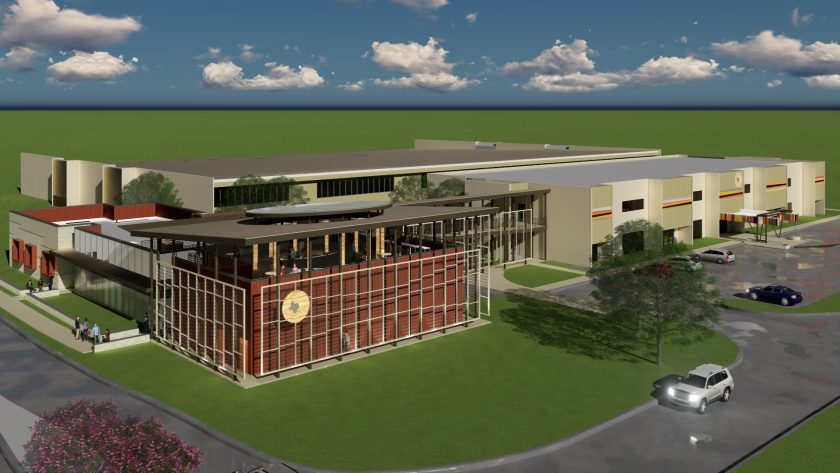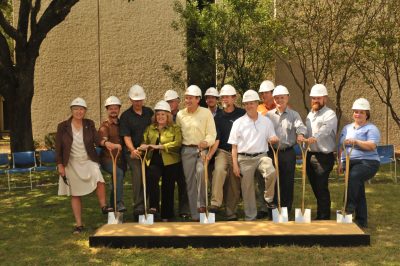Bureau of Economic Geology Breaks Ground on New Core Research Building
October 6, 2017

The Jackson School of Geosciences Bureau of Economic Geology has begun construction on its new core research building, a project that will provide state-of-the facilities for scientists conducting research on cuttings and core samples in the bureau’s Austin Core Research Center.
“Everything we do is built on rocks,” said bureau Director Scott W. Tinker during a ground breaking ceremony on Oct. 5, 2017. “It’s exciting to have this new building to show what we’re all about.”

The bureau, which also acts as the state of Texas geological survey, has the largest collection of geological material in the country in its three core repositories in Austin, Houston and Midland. These cutting and cores samples are fundamental for research in oil and gas exploration, mineral exploration, geothermal exploration, hydrogeology and other fields.
Jackson School Dean Sharon Mosher attended the ground breaking and emphasized the importance of the new research space.
“I think it’s really wonderful that we’re going to have a place for rocks—because that’s what most of us do—and for modern technology,” Mosher said. “I look forward to coming to the opening, and I think Scott and [Assistant Bureau Director] Jay Kipper, and everybody else has done just a tremendous job.”
The scientific equipment in the new facility will include a scanning electron microscope on a floating slab, a design that prevents vibrations from traffic on nearby roads from interfering with the delicate instrument. The 10,000-square-foot building will also include a core viewing room exclusively for use by student and bureau research staff. The roof of the building will include a terrace for events.
The project should be finished by fall 2018. The new core research building will be located adjacent to the bureau’s headquarters on The University of Texas at Austin J.J. Pickle Research Campus.
After the core research building is constructed, the bureau will begin major renovations on the building that serves as its current core research center. The plan is to update 17 labs with state-of-the-art equipment, as well as update the building’s interior design. In total, the new building and renovations will cost $10 million.
The new building and lab renovations are phase one of a larger project, Tinker said, with phase two including the construction of a Texas rock garden between the old building and the new building. The construction of the building is expected to take eight to ten months, and the lab renovations to take two to four months.
The bureau’s current research center contains a core repository with cores and cuttings from Texas and around the world. The center was built under the tenure of Professor and Leonidas T. Barrow Centennial Chair in Mineral Resources William F. Fisher, a longtime director of the bureau. Tinker said that Fisher’s vision helped build the bureau into a powerhouse of core curation—with the bureau’s three core repositories acting as a “Library of Congress” for core samples, holding more than 2 million boxes of specimens. The new building will help fortify an already impressive core research center, and help ensure that the rocks are preserved so that future generations can read their story.
“As geologists, you see what you know, and right now we don’t know everything,” Tinker said. “Future generations will see different things than we are today.”
For more information, contact: Anton Caputo, Jackson School of Geosciences, 512-232-9623; Monica Kortsha, Jackson School of Geosciences, 512-471-2241
